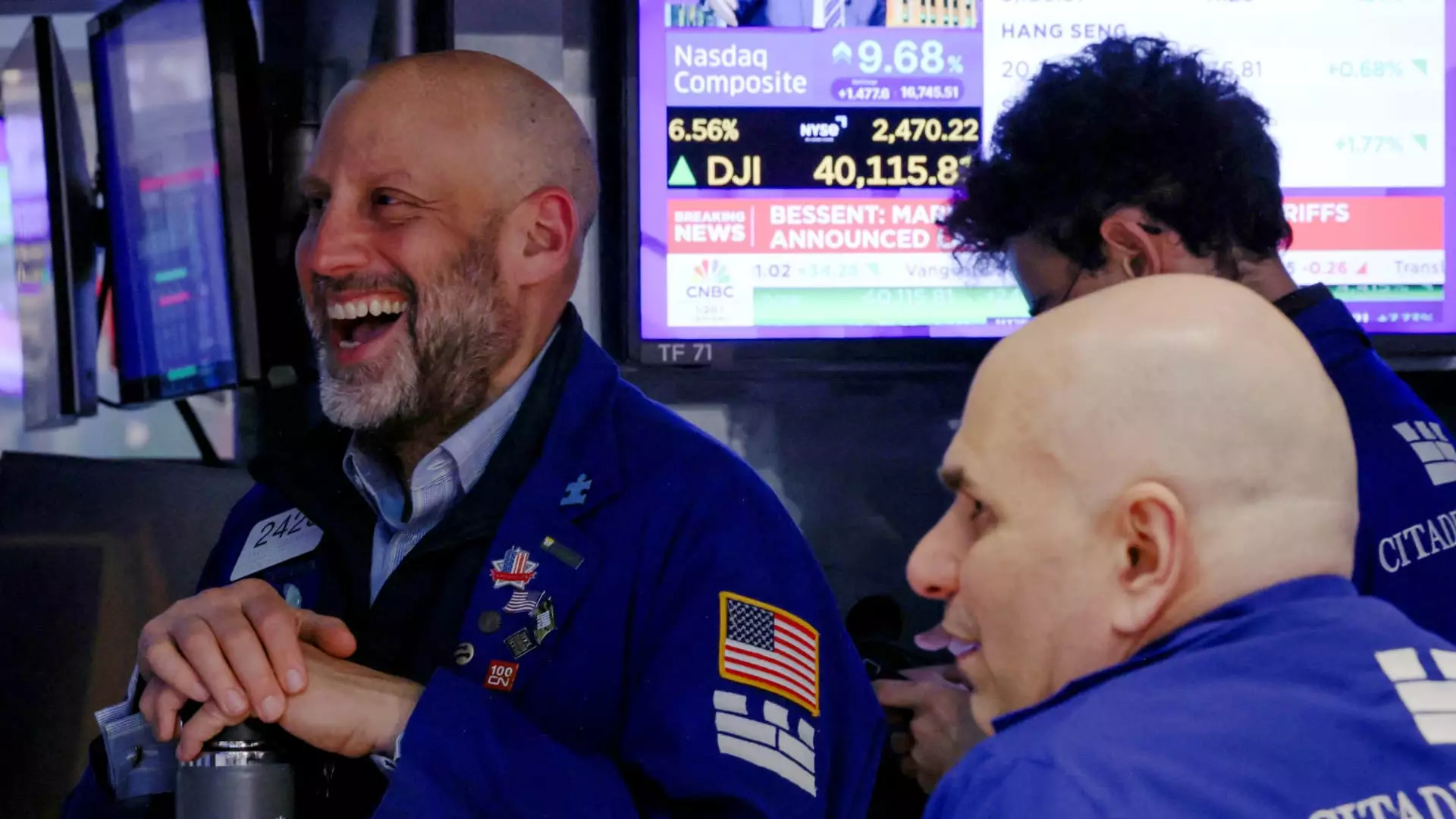On a day that saw the stock market experience unprecedented gains reminiscent of a rollercoaster ride, the announcement from President Donald Trump to temporarily halt some of the corrosive ‘reciprocal’ tariffs sent shockwaves through Wall Street. Stocks radar into a frenzy: the Dow Jones surged by over 3,000 points — a staggering 8% increase — while the Nasdaq Composite leapt by an unbelievable 12.4%. Meanwhile, the S&P 500 recorded its largest one-day gain in five years, advancing by 9.3%. The euphoria was palpable, the kind that can only be ignited by desperate traders and the intoxicating allure of profit amidst uncertainty.
But there is a significant undercurrent to celebrate: the stark reality that such wild swings in the market reflect a deeper vulnerability—the results of erratic governance and unsteady economic policy. While the pause sounds comforting, one must critically examine the implications of these moves on sustained economic health and legislative integrity.
Short-Term Gains vs. Long-Term Consequences
At first glance, the announcement to pause tariffs for 90 days appears to be a lifeline for investors battered by the treacherous waves of market volatility. However, what are we really celebrating if not a mere temporary band-aid on a festering wound? Treasury Secretary Scott Bessent quickly clarified that this reprieve only applies to countries other than China, which will continue facing higher tariffs. The impending risks remain over the horizon, poised to unsettle an already jittery market when this brief halt inevitably concludes.
Astute investors should question the sustainability of these gains. Markets that rise on the back of such volatile policies resemble a house of cards, waiting for the slightest provocation to tumble down. If anything, the announcement serves more as a playground for speculative betting rather than a foundation for confidence. Short of systematic reform, merely delaying tariff implementation does little to address the machinations of an unpredictable market environment.
The Fragility of Investor Confidence
The very foundation of investor confidence rests precariously on the perception that government actions will foster stability and growth. A brief flirtation with relief—no matter how exhilarating—cannot substitute for a consistent and equitable policy framework. Trump’s post on Truth Social urging investors to seize this “great time to buy” reeks of manipulation, a reminder that the emotional rollercoaster of the stock market is often at the whims of a few powerful figures.
When traders witness over-promising proclamations from leadership, skepticism should replace euphoric optimism. As notable market strategist Sam Stovall aptly put it, this rally may merely be a short-lived escape, with genuine recovery still a distant aspiration. Indeed, one cannot help but feel the weight of his adage: “Fool me once, shame on you; fool me five times, shame on me.”
The Illusion of Resolution
As Trump’s announcement sent investors into a buying frenzy, it was also a stark reminder of the ongoing tit-for-tat trade tensions with China, and the encroaching tariffs set to take effect by the European Union on the U.S. This flickering moment of triumph, though visceral, obscures the deeper crises at play, including the escalating anxiety over an economic landscape fraught with uncertainty.
Investors now find themselves wondering whether they’re on the cusp of a genuine turnaround, or if they are merely participants in an elaborate game designed to distract from fundamental flaws in economic policy. The proposed “90-day pause” offers a tantalizing glimpse of respite, but the reality is more sobering. The looming peril of renewed tariffs casts a long shadow on the market, leaving many to question just how solid these gains truly are.
Fostering Future Resilience
In a healthy economy, market reinvigoration would arise from substantive progress—investment in innovation, infrastructure, and social stability. Yet here we are, fixating on transient announcements rather than sustainable growth strategies. If the markets are to truly benefit from these temporary halts, they must evolve towards a resilience that prioritizes comprehensive bilateral agreements, shared prosperity, and a stable economic climate.
What is clear is that the stock market’s volatile dance, orchestrated by hasty government interventions, only serves to magnify the importance of consistent leadership and well-structured economic policies. In the wake of this recent surge, let’s hope our policymakers engage in meaningful and constructive dialogue to carve a path towards a more robust and steady marketplace—one that does not depend on frantic, and often misleading, rallying cries. That is the change we must seek, before we find ourselves right back at square one, vulnerable to the whims of a capricious economy once more.


Leave a Reply